The Amazing Alfa Romeo Montreal
Everyone likes the Alfa Romeo Montreal, and it’s easy to see why. But if you’ve ever wondered why there’s an Alfa Romeo named after a Canadian city, here’s your answer…
アルファロメオ モントリオールの素晴らしさ
アルファロメオ モントリオールは、誰もが好きなモデルです。しかし、なぜカナダの都市名を冠したアルファロメオがあるのか、不思議に思っていたなら、ここにその答えがあります...。
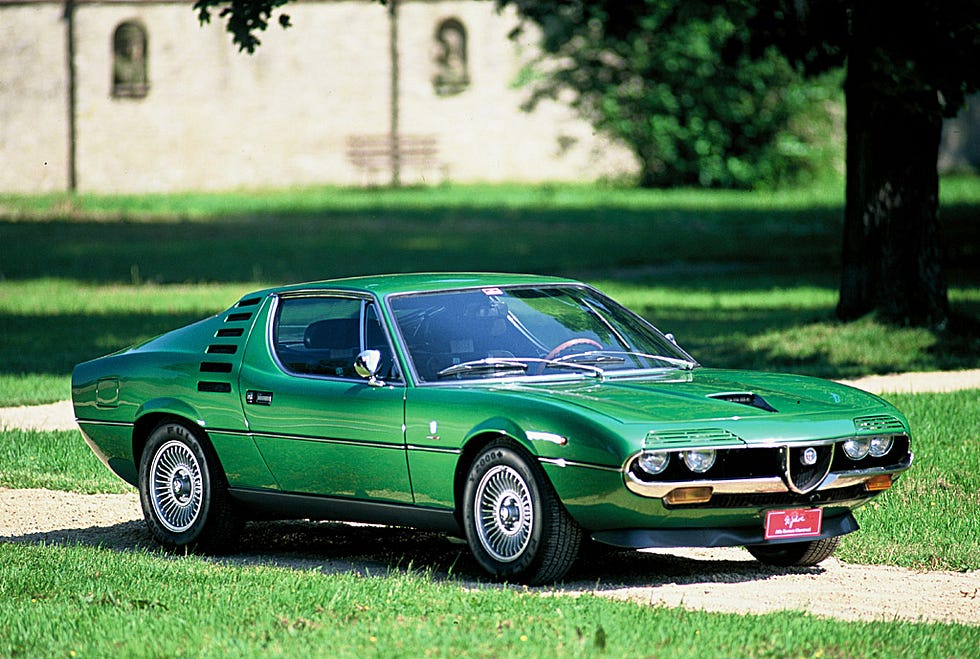
Picture from media.stellantis.com
画像はmedia.stellantis.comより引用。
Expo ‘67
Our story begins on the 28th of April, 1967, with the inauguration of the World’s Fair in Montreal. The visitors of the pavilion dedicated to mankind’s technical achievements were treated, among other marvels of the modern world, to the sight of two identical Alfa Romeo coupés resplendent in pearlescent white paint.
It’s unclear why, of all of the world’s automakers, the Expo’s organizers chose Alfa Romeo, but it does make sense once you consider the brief was to express nothing less than “the highest aspiration of man in terms of cars.” After all, some would argue that was already Alfa’s whole business!
Pulling it off wasn’t easy, though, as the Expo’s organizers approached Alfa Romeo just nine months before the event’s inauguration.
The dauntingly short timeframe led the company to choose the existing Giulia GT’s platform as a starting point and outsource the task of designing and constructing the two prototypes to Nuccio Bertone’s famed Carrozzeria, as creating heart-stopping show cars within impossible deadlines was his firm’s specialty.
愛・地球博(EXPO'67)
1967年4月28日、モントリオール万国博覧会の開幕から物語は始まる。人類の技術的偉業を紹介するパビリオンを訪れた人々は、現代世界の驚異と並んで、パールホワイトに輝く2台の同じアルファロメオのクーペを目にしたのである。
世界中の自動車メーカーの中から、なぜアルファロメオを選んだのかは不明だが、「自動車における人間の最高の願望」を表現することが目的だったことを考えれば、納得がいくだろう。それこそがアルファのビジネスだとも言えるでしょう。
しかし、万博の主催者がアルファロメオに接触したのは、開催までわずか9ヶ月しかなかったのです。
そのため、アルファロメオは既存のジュリアGTのプラットフォームをベースに、2台のプロトタイプの設計と製造を、ヌッチョ・ベルトーネ率いるカロッツェリアに委託することにした。
Eye candy
Bertone’s designer, Marcello Gandini, had just finished working on the Lamborghini Miura and its design language clearly influenced the Alfa prototypes despite their front-engine configuration.
目の保養
ベルトーネのデザイナー、マルチェロ・ガンディーニは、ランボルギーニ・ミウラの開発を終えたばかりで、そのデザイン言語は、フロントエンジンという構成にもかかわらず、明らかにアルファのプロトタイプに影響を及ぼしていた。
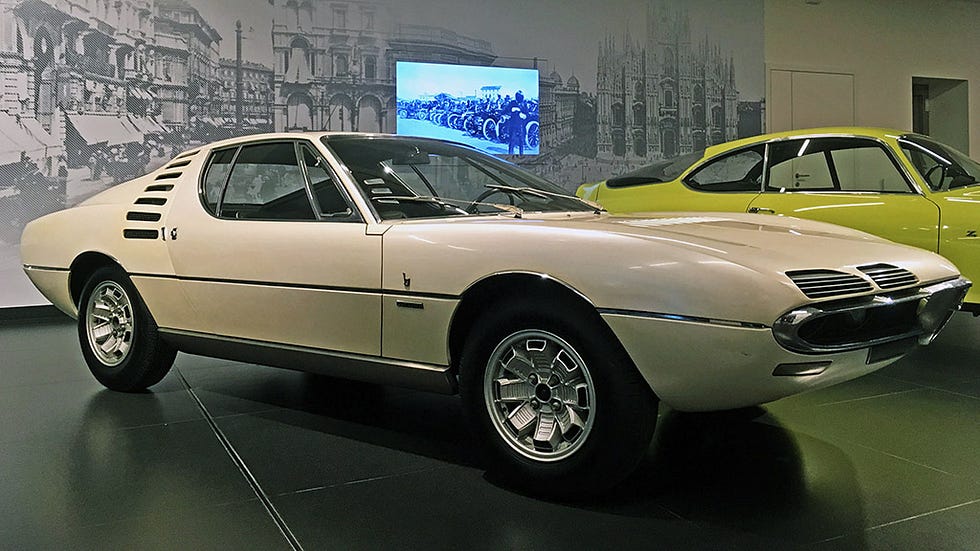
The Expo 1967 prototype (picture from the Author)
1967年の万博のプロトタイプ(写真は筆者提供)
As the cars’ intended purpose was simply to wow the Expo’s visitors, Bertone dug deep into its bag of tricks, concealing the headlights behind slots in a giant clamshell bonnet and adding non-functional side slots. The latter was a design element borrowed from a previous Bertone creation, the Canguro from 1964, and was there purely for dramatic effect.
The result was a sleek vision for the future that promised a level of performance way beyond what the installed powerplant could actually muster, as both show cars were equipped with the base Giulia Ti 1.6 liters twin cam engine, rated at 92 HP at 6000 Rpm.
万博の来場者を驚かせるという目的から、ベルトーネはヘッドライトを巨大なボンネットの溝に隠し、機能的でないサイドスロットを追加するなど、さまざまな工夫を凝らした。サイドスロットは、1964年のカングロから借用したもので、ドラマチックな効果を狙ったものである。
2台ともベースとなるジュリアTi 1.6Lツインカムエンジンは92HP/6000rpmで、搭載されるエンジンの性能をはるかに超えたスマートな未来像となった。
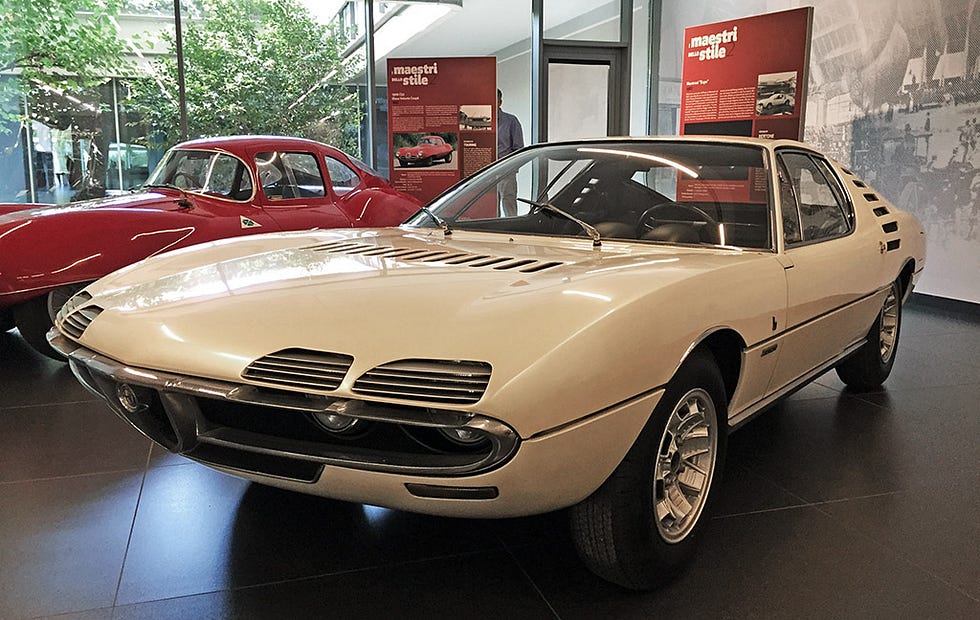
The Expo 1967 prototype (picture from the Author)
1967年の万博のプロトタイプ(写真は筆者提供)
While that was already more than enough for sitting on a turntable, it was clear to everyone at Alfa Romeo that an eventual production model needed a powertrain just as exotic as Bertone’s bold exterior design suggested.
Luckily, Alfa Romeo’s racing arm Autodelta had such an engine in-house, in the form of the two-liters four-cam V8 used on the “Tipo 33” sports-prototype racing program and the low-production 33 Stradale that was directly derived from that.
しかし、ベルトーネの大胆なエクステリアデザインと同様に、市販モデルにはエキゾチックなパワートレインが必要であることは、アルファロメオの誰もが知っていることであった。
幸いなことに、アルファロメオのレーシング部門であるオートデルタには、スポーツプロトタイプのレーシングプログラム「ティーポ33」とその直系のロープロダクション「33ストラダーレ」に搭載された2リッター4カムV8エンジンがあり、それを自社で開発していた。
Unique circumstances
In short, the Montreal project became a production reality thanks to a unique set of unrepeatable circumstances: the contemporary availability of a Bertone design so stunning it couldn’t be ignored and Autodelta’s racing V8 engine during a period of growth and confidence in the future for Alfa Romeo as a whole.
That doesn’t mean the transition from the Expo’s stage to Europe’s roads wasn’t a challenging one, though.
ユニークな状況
つまり、アルファロメオが成長し、将来への自信を深めていた時期に、ベルトーネのデザインは無視できないほど美しく、オートデルタのレーシングV8エンジンも利用できるという、他にはない状況が、モントリオールプロジェクトを実現させたのである。
とはいえ、万博の舞台からヨーロッパの道路への移行が困難でなかったというわけではない。
The engine
Autodelta’s V8 made plenty of power, but it was a highly-strung screamer designed with racing in mind, and transforming it into the smooth, flexible powerplant Montreal owners know and love took a laborious re-engineering process.
エンジン
オートデルタのV8エンジンは十分なパワーを発揮したが、レーシングカーを意識して設計されたハイストリンガーであり、モントリオールのオーナーが愛するスムーズで柔軟なパワープラントへと変貌させるためには、手間のかかるリエンジニアリングが必要であった。
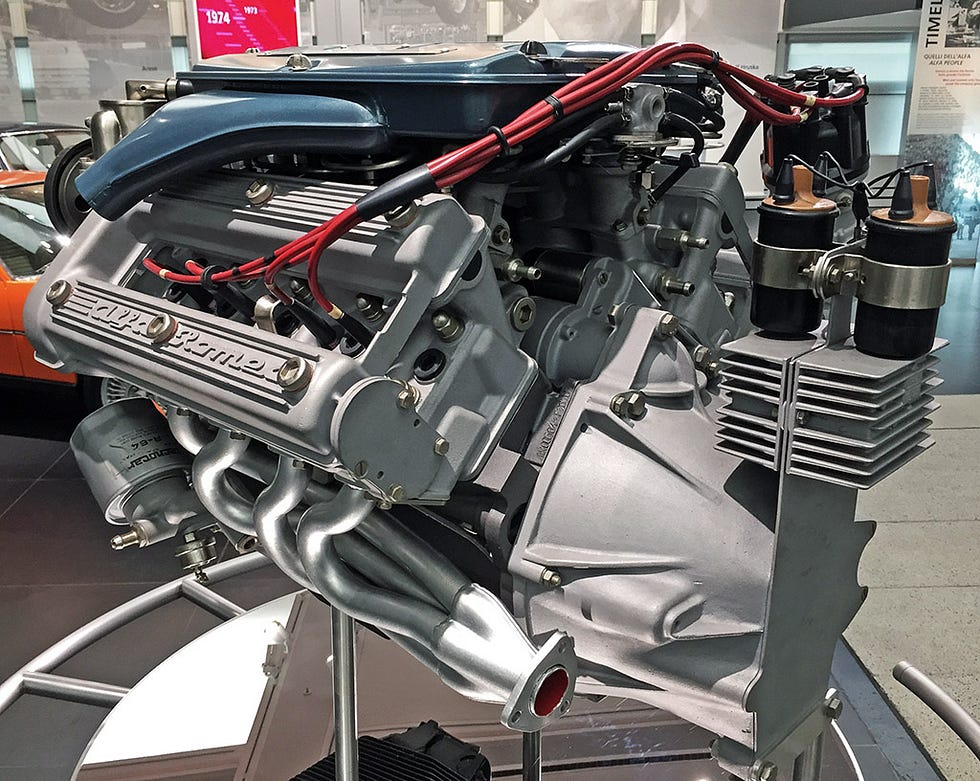
The Montreal’s engine (picture from the Author)
モントリオールのエンジン(写真は筆者提供)
The remarkably compact aluminum engine block with iron cylinder liners remained very similar to the one used on the 33 sports prototypes, but its displacement grew to roughly 2.6 liters thanks to a 2 mm wider bore and a 12,3 mm longer stroke.
The new crankshaft abandoned the 33’s flat-plane design for a more traditional 90° cross-plane to achieve a better balance. However, the engine block’s tight dimensions limited the size of the more substantial counterweights the new crankshaft needed, forcing Alfa Romeo to source an aerospace-grade sintered tungsten alloy named “turconit,” specifically chosen for its high specific weight.
鉄製シリンダーライナーを備えた極めてコンパクトなアルミニウム製エンジンブロックは、スポーツプロトタイプ33に使用されたものとほぼ同様であるが、ボア幅が2mm、ストロークが12.3mm拡大されたことにより、排気量は約2.6リットルに拡大された。
クランクシャフトは33のフラットプレーンから伝統的な90°クロスプレーンに変更され、より良いバランスが実現された。しかし、エンジンブロックの寸法が狭いため、新しいクランクシャフトが必要とする、より大きなカウンターウェイトのサイズには制限があり、アルファロメオは航空宇宙グレードの焼結タングステン合金「ターコリット」を調達することを余儀なくされている。
To keep the bonnet line as low as possible, the Montreal’s V8 retained the dry-sump lubrication system used on the 33s, a solution typical of racing engines but rarely used on production ones due to its additional costs.
The Lucas indirect fuel-injection system used on the 33 racing engines was far too crude for road use and was replaced for the Montreal by a system developed by the Alfa Romeo subsidiary Spica.
It used a mechanical pump driven by the crankshaft via a rubber belt and fed by two electric pumps located in the fuel tank. The system was similar to the one used on the US-spec Spiders and GTs and was quite advanced for the era, its sole weakness being the period mechanics’ stubborn reluctance to learn how to service it properly.
ボンネットラインをできるだけ低くするため、V8エンジンには33型に採用されたドライサンプ式潤滑システムが採用された。これはレーシングエンジンでは一般的だが、市販エンジンではコストアップになるため採用されることはほとんどなかった。
33レーシングエンジンに採用されたルーカスの間接燃料噴射システムは、一般道での使用にはあまりに粗雑であったため、アルファロメオの子会社スピカが開発したシステムに変更された。
このシステムは、クランクシャフトからゴムベルトで駆動される機械式ポンプと、燃料タンク内に設置された2台の電動ポンプから燃料を供給するものであった。このシステムは、米国仕様のスパイダーやGTに採用されたものと同様で、当時としてはかなり先進的なものであったが、当時のメカニックが正しい整備方法を学ぼうとしないことが唯一の弱点であった。
For the sake of simplicity, the double spark plug per cylinder used on the 33 engines was abandoned in favor of an electronically-controlled capacitor discharge ignition system (the first on a production Alfa engine) using just a single plug per cylinder.
The result was a remarkably compact and light powerplant rated at 200 HP at 6500 Rpm but that, most importantly, produced already 90% of its maximum torque output at just 2700 Rpm.
As the engine’s torque output was far beyond what the Giulia’s gearbox could handle, Alfa Romeo settled for a ZF S5/18 manual five-speeder, which sent power to the rear wheels via a limited-slip differential.
33型エンジンで採用されていたシリンダーごとのダブルスパークプラグは廃止され、電子制御のコンデンサー放電式点火システム(アルファの量産エンジンでは初)が採用され、シンプルになった。
その結果、200馬力/6500rpmという驚異的な小型・軽量化を実現しながら、最大トルクの90%をわずか2700rpmで発生させることに成功した。
このエンジンのトルク出力は、ジュリアのギアボックスが扱える範囲をはるかに超えていたため、アルファロメオはZF S5/18マニュアル5速を採用し、リミテッド・スリップ・デフを介して後輪にパワーを送ることにした。
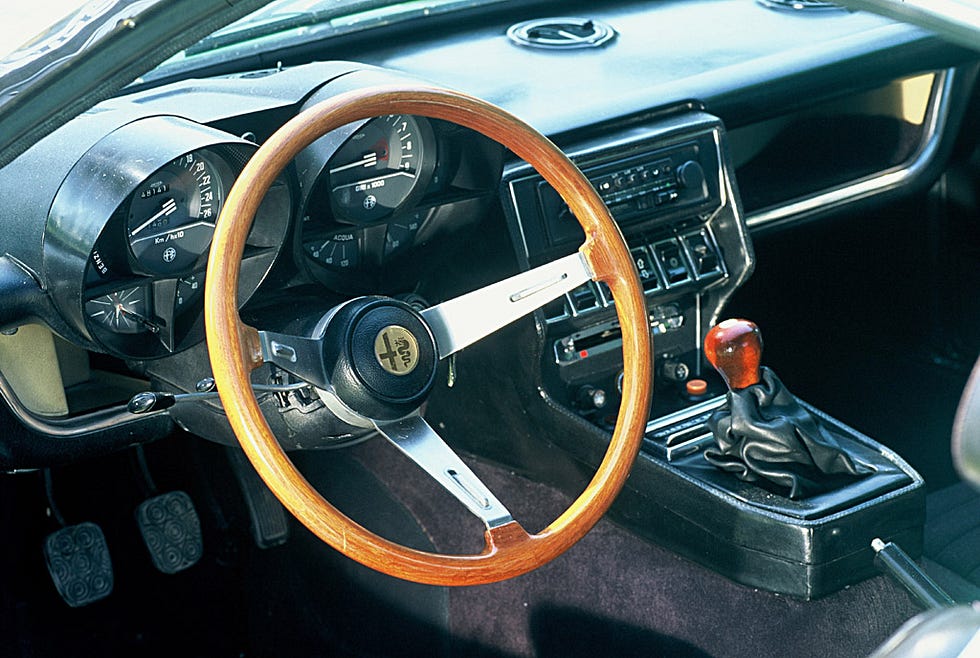
The Montreal’s interior (picture from media.stellantis.com)
モントリオールの内装(画像:media.stellantis.comより引用)
Body and chassis
Perhaps the least inspiring aspect of the Montreal is its chassis design that, due to costs and time constraints, remained a close derivative of the 1750 GTV, albeit with a 2 mm wider track at the front and 12 at the rear.
The braking system used ventilated discs on all four wheels, and the Montreal sat on four Michelin 195/70 tires mounted on Campagnolo 14" alloy wheels whose characteristic “turbine” design would go on to feature on many subsequent Alfa models.
The bodyshell of the Montreal was manufactured by Bertone near Turin, starting from the floorpan and firewall pressings supplied by Alfa’s Arese plant, where the bodies were sent back once fully completed to receive their engines and running gear.
ボディとシャシー
コストと時間の制約から、フロントで2mm、リアで12mmワイドトレッド化されたとはいえ、1750GTVの派生車種にとどまっている。
ブレーキシステムは4輪ともベンチレーテッド・ディスクで、ミシュランの195/70タイヤ4本とカンパニョーロの14インチ・アロイ・ホイールが装着された。
モントリオールのボディは、アルファのアレーゼ工場から供給されたフロアパンとファイアウォールのプレス加工からトリノ近郊のベルトーネで製造され、完全に完成したボディはエンジンとランニングギアを受け取るために返送された。
The design
Even though the Montreal’s exterior design nowadays garners almost universal admiration wherever it goes, contemporary critics were somewhat less impressed when the car went on sale in 1971.
デザイン
今でこそ、どこへ行っても賞賛されるモントリオールのエクステリアデザインだが、1971年に発売された当時は、批評家たちからあまりいい印象を持たれていなかった。
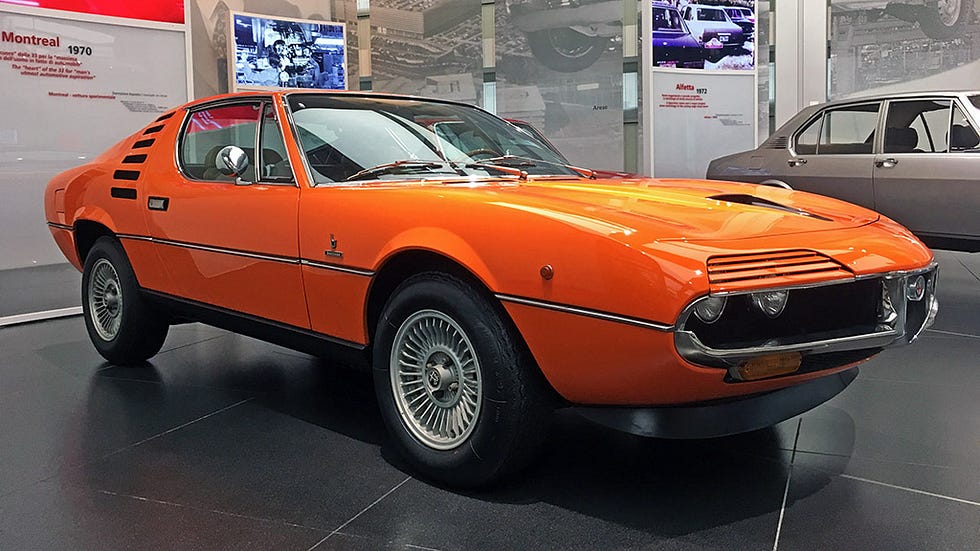
Picture from the Author
著者からの写真
Compared to the prototype from nearly four years earlier, the production car appeared chunkier and less streamlined due to the many modifications made to make more room in the cabin and under the bonnet.
4年前のプロトタイプに比べ、ボンネットやキャビンに余裕を持たせるために多くの改良が加えられたため、市販車はよりがっしりとした、流線型ではない印象となった。
Despite the V8’s compact dimensions, the bonnet line and scuttle still had to become taller, and so did the roofline. The rear end became taller and chunkier, too, to accommodate the large fuel tank and spare wheel. The windshield had a less aggressive rake, the curvature of the side windows was reduced, and the front overhang was nearly 6 cm shorter than the original prototype. The black NACA duct on the bonnet was fake, while two of the six slots on each side did serve as outlets for stale cabin air.
V8はコンパクトになったものの、ボンネットラインとスカットルは高くならざるを得ず、ルーフラインも高くなった。リアエンドは、大型燃料タンクとスペアホイールを搭載するため、より背が高く、よりがっしりしたものになった。フロントガラスはアグレッシブなレーキを抑え、サイドウィンドウの曲率を小さくし、フロントオーバーハングも原型より6cm近く短くなった。ボンネットの黒いNACAダクトはフェイクだが、左右にある6本のスロットのうち2本は、室内の悪臭を排出するためのものであった。
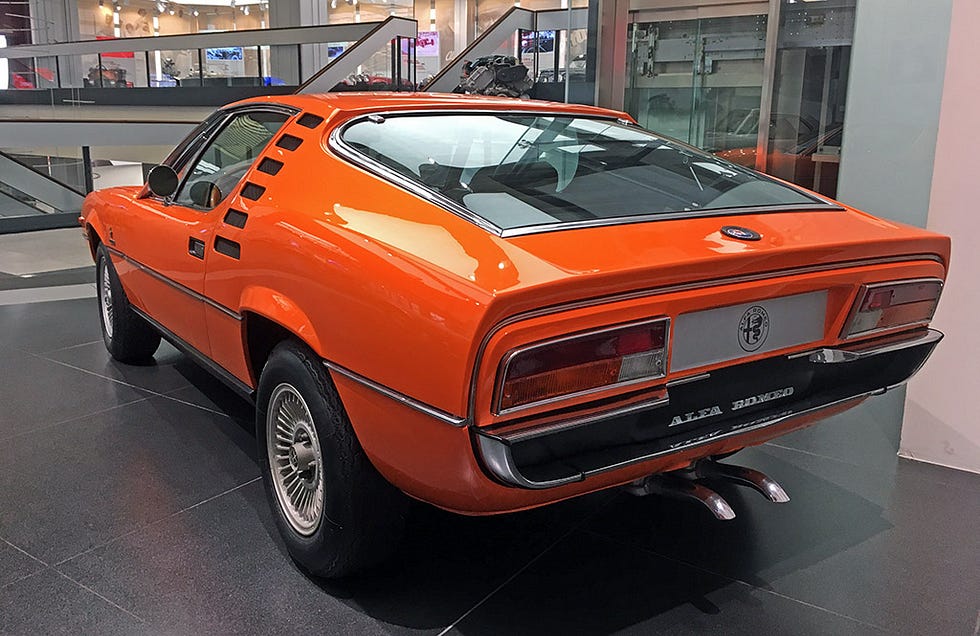
Picture from the Author
著者からの写真
However, what was considered the cutting edge of automotive design was moving on rapidly at the time, and the Montreal’s voluptuous curves seemed almost old-fashioned against the sharp wedge designs that Bertone itself was pioneering at the time.
しかし、当時は自動車デザインの最先端がどんどん進んでおり、ベルトーネが先駆けたシャープなウェッジデザインに対して、モントリオールの官能的な曲線はほとんど古めかしく感じられたのである。
Sales (or lack thereof)
Nevertheless, initial enthusiasm for Alfa’s new flagship GT proved high: 668 cars were delivered in 1971, which became 2,377 the following year: an excellent result given the model’s steep retail price and high running costs.
To put that into perspective, Alfa Romeo’s sold 5443 copies of the successful Spider in the same year.
販売台数(またはその不足)
それでも、アルファの新しいフラッグシップGTに対する初期の熱意は高く、1971年には668台、翌年には2377台が納車され、このモデルの高い小売価格と高いランニングコストを考えると素晴らしい結果であった。
同じ年にアルファロメオが販売したスパイダーが5443台であることを考えると、この数字は非常に大きいと言える。
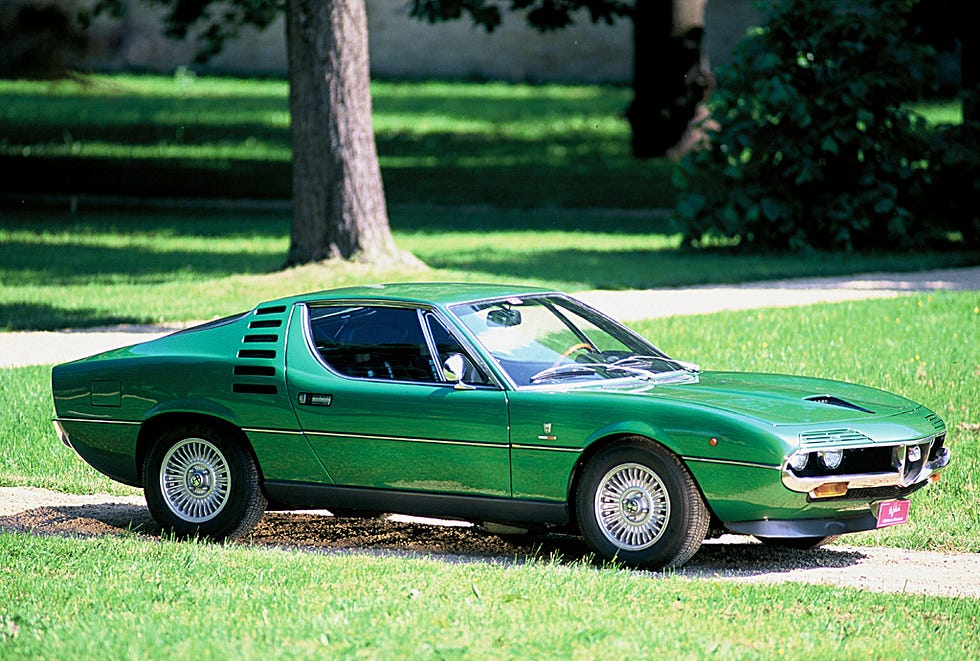
Picture from media.stellantis.com
画像はmedia.stellantis.comより引用
However, it was all downhill from there, as the oil crisis triggered by the Yom Kippur War decimated the performance car market between 1973 and ‘74.
しかし、そこから先は下り坂だった。1973年から74年にかけて、ヨム・キプール戦争に端を発したオイルショックがパフォーマンスカー市場を壊滅させたからだ。
Conceived in a period of prosperity and optimism, the Montreal was decidedly out of place in the new era of high fuel costs, speed limits on motorways, and double-digit inflation. Alfa Romeo itself as a company had changed, its management preoccupied with much more pressing issues like falling productivity, poor quality, and skyrocketing costs.
繁栄と楽観の時代に誕生したモントリオールは、高い燃料費、高速道路の速度制限、二桁のインフレといった新しい時代には明らかにそぐわないものであった。アルファロメオという会社も変わり、経営陣は生産性の低下、品質の低下、コストの高騰など、より差し迫った問題に頭を悩ませていた。
Twilight
Montreal production fell to a trickle, but the model remained on Alfa’s catalog until as late as 1977: just 27 cars were completed that year, up 4 units from the 23 made in 1976.
During that period, Autodelta’s boss Carlo Chiti thought of installing the Montreal’s V8 in a small series of Alfetta GTs built to challenge the Lancia Stratos’ dominance in the world rally championship.
However, the production tooling had already been disposed of by then, as the expensive powerplant had no place in any of the future Alfa Romeo models.
The two original prototypes from the 1967 Expo returned to Italy once the exhibition closed and still survive in the Alfa Romeo museum’s reserve collection.
トワイライト
モントリオールは生産台数が減少したが、アルファのカタログには1977年まで掲載され、1976年の23台から4台増の27台が完成した。
この年、オートデルタのボス、カルロ・キティは、世界ラリー選手権でランチア・ストラトスに対抗するため、アルフェッタGTの小シリーズにこのモントリオールのV8を搭載することを考えた。
しかし、この高価なパワープラントは将来のアルファロメオのどのモデルにも搭載されないため、その時点ですでに生産用の金型は廃棄されていた。
1967年の万国博覧会に出品された2台のオリジナルプロトタイプは、博覧会終了後にイタリアに戻り、現在もアルファロメオ博物館の予備コレクションとして残されている。
引用サイト:https://medium.com/roadster-life/the-amazing-alfa-romeo-montreal-21ce562c40a0
~DeepLで翻訳しました。~
同じ著者、同じタイトルの動画
The Amazing Alfa Romeo Montreal
別の動画です。走ってるところが見れます。特徴的な眉毛の部分は可動するんですね!
1971 Alfa Romeo Montreal - Jay Leno’s Garage
2つとも英語onlyです。














